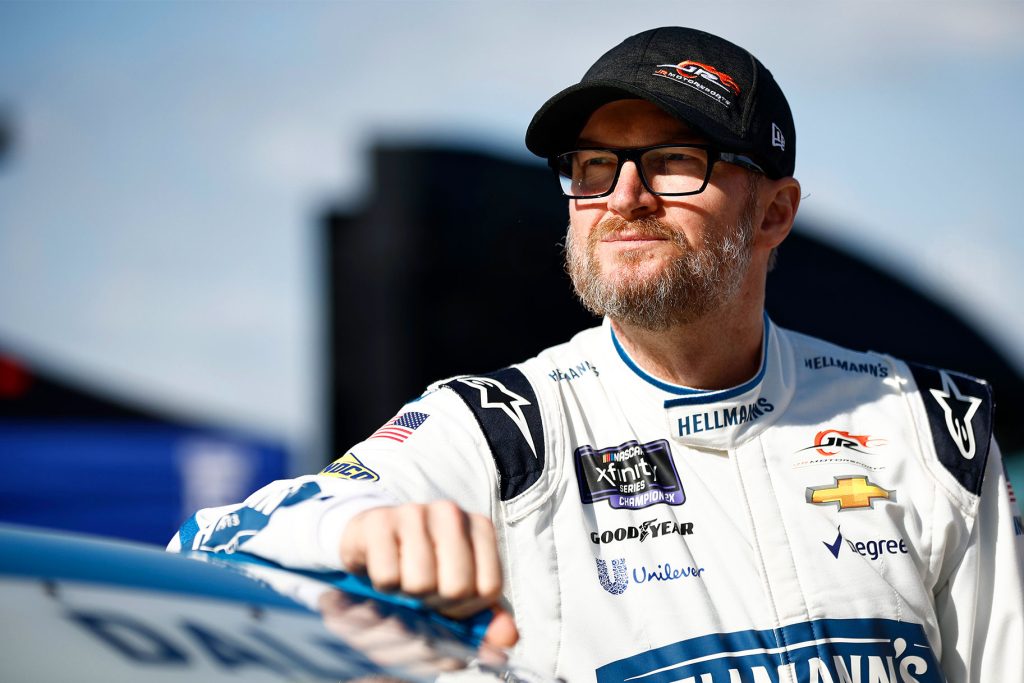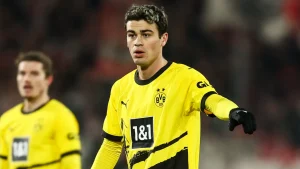
Dale Earnhardt Jr. is one of the most iconic figures in NASCAR history. Known as the “Pied Piper” of Daytona, he carried the weight of his father’s legendary legacy while carving out a remarkable career of his own. From his early days in the Busch Series to becoming a two-time Daytona 500 champion, Dale Jr.’s journey through the years is a testament to perseverance, skill, and the enduring love of motorsports.
Early Years and Family Legacy
Born on October 10, 1974, Ralph Dale Earnhardt Jr. grew up in the heart of NASCAR. His father, Dale Earnhardt Sr., was one of the sport’s most successful and revered drivers. Dale Jr. grew up surrounded by racing, absorbing the intricacies of the sport while forming a strong bond with his father.
Though it was clear Dale Jr. had racing in his blood, he faced pressure to live up to his father’s towering achievements. His early career showed flashes of promise, but it wasn’t until he joined the Busch Series (now Xfinity Series) in 1996 that his talent began to shine.
Rise in the Busch Series
Dale Jr.’s breakthrough came in the late 1990s when he joined his father’s racing team, Dale Earnhardt, Inc. (DEI). He won consecutive Busch Series championships in 1998 and 1999, showcasing his ability to dominate on the track. His aggressive style and cool demeanor made him a fan favorite, setting the stage for his entrance into the NASCAR Cup Series.
Breakthrough in the NASCAR Cup Series
Dale Earnhardt Jr. entered the Cup Series full-time in 2000, driving the No. 8 Chevrolet for DEI. He wasted no time making an impact, winning his first race at Texas Motor Speedway in just his 12th start. His rookie season included two wins and several top-10 finishes, earning him Rookie of the Year honors.
However, 2001 was a pivotal year for Dale Jr. and the entire NASCAR community. During the Daytona 500, tragedy struck when his father, Dale Earnhardt Sr., died in a crash on the final lap. The loss was profound, and many wondered how Dale Jr. would handle the pressure of racing in the shadow of such a significant personal and professional loss.
Overcoming Tragedy and Daytona Success
In a storybook moment, Dale Earnhardt Jr. returned to Daytona in July 2001 and won the Pepsi 400, just months after his father’s fatal accident on the same track. It was a moment that cemented his place in NASCAR history and showcased his emotional resilience. His ability to triumph on the sport’s biggest stage while honoring his father endeared him to fans even more.
Over the next few years, Dale Jr. established himself as one of the premier drivers in the sport. He became a master of restrictor-plate racing, excelling at tracks like Daytona and Talladega. His first Daytona 500 victory came in 2004, a crowning achievement that solidified his reputation as a top contender.
Transition and New Challenges
In 2007, Dale Jr. made the difficult decision to leave DEI and join Hendrick Motorsports, where he would drive the iconic No. 88 Chevrolet. The move was seen as a fresh start, but it also came with challenges. Despite having a strong team behind him, Dale Jr. struggled to consistently compete for championships, enduring a winless streak from 2009 to 2012.
However, his popularity never wavered. For 15 consecutive years, Dale Jr. was voted NASCAR’s Most Popular Driver, a reflection of his deep connection with fans and his relatable personality. His openness about his struggles, including injuries and concussions, made him a sympathetic figure in the sport.
Redemption and Daytona 500 Glory Again
In 2014, Dale Earnhardt Jr. experienced a resurgence. He won the Daytona 500 for the second time, delivering an emotional victory for his fans and team. That season, he enjoyed one of the best performances of his career, earning four wins and securing a spot in the NASCAR playoffs. Although he didn’t win the championship, his 2014 campaign reminded everyone of his talent and perseverance.
Retirement and Post-Racing Career
Dale Earnhardt Jr. retired from full-time racing in 2017, citing health concerns and a desire to preserve his long-term well-being. Despite stepping away from competitive driving, he remained an influential figure in the sport. He transitioned into a broadcasting career with NBC Sports, where he brought his passion and insight to the booth as a commentator.
In addition to his broadcasting work, Dale Jr. continued to be a team owner in the Xfinity Series, fielding cars under JR Motorsports. His influence in the sport persisted, as he helped develop young talent and stayed involved in various aspects of NASCAR.Dale Earnhardt Jr. may have retired from full-time racing, but his legacy continues to thrive. He remains a beloved figure in NASCAR, not just for his success on the track but for his authenticity, humility, and dedication to the sport.
Throughout his career, Dale Jr. showed that while the shadow of his father was ever-present, he was more than capable of carving out his own legacy. From emotional victories at Daytona to his leadership role within NASCAR today, Dale Earnhardt Jr. will always be remembered as one of the sport’s most influential figures, both on and off the track.







